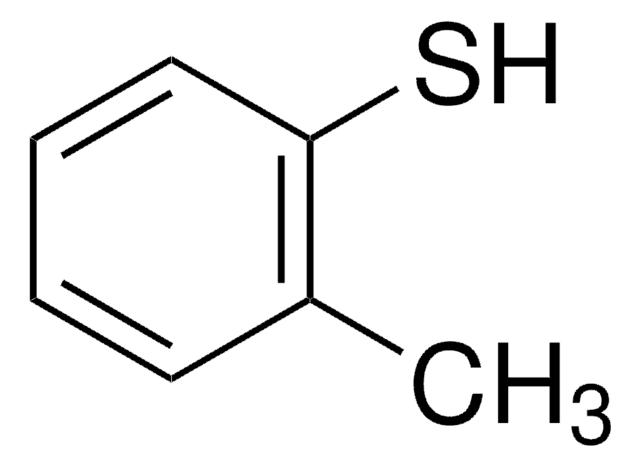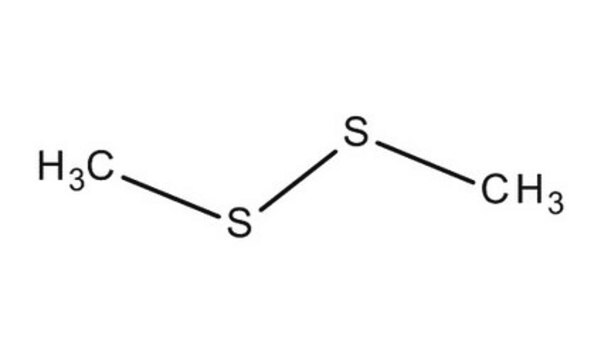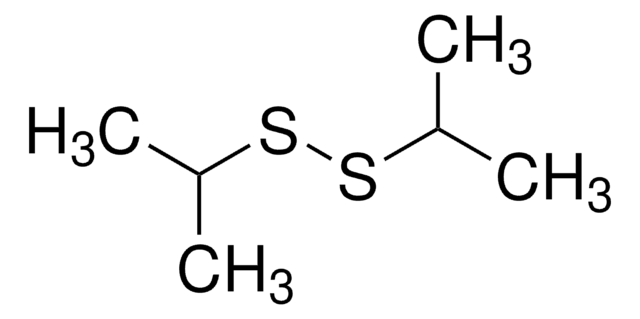About This Item
Fragrance grade
Halal
Kosher
meets purity specifications of JECFA
推荐产品
生物源
synthetic
品質等級
等級
FG
Fragrance grade
Halal
Kosher
agency
follows IFRA guidelines
meets purity specifications of JECFA
法律遵循
EU Regulation 1223/2009
EU Regulation 1334/2008 & 178/2002
FDA 21 CFR 172.515
蒸汽密度
3.24 (vs air)
蒸汽壓力
22 mmHg ( 20 °C)
化驗
≥98%
自燃溫度
>572 °F
expl. lim.
16 %
折射率
n20/D 1.525 (lit.)
bp
109 °C (lit.)
mp
−85 °C (lit.)
密度
1.046 g/mL at 25 °C (lit.)
應用
flavors and fragrances
文件
see Safety & Documentation for available documents
食物過敏原
no known allergens
香料過敏原
no known allergens
感官的
cabbage; onion; vegetable; sulfurous
SMILES 字串
CSSC
InChI
1S/C2H6S2/c1-3-4-2/h1-2H3
InChI 密鑰
WQOXQRCZOLPYPM-UHFFFAOYSA-N
正在寻找类似产品? 访问 产品对比指南
應用
- GC-IMS-Based Volatile Characteristic Analysis of Hypsizygus marmoreus Dried by Different Methods.: Dimethyl disulfide is used to enhance the aroma of some fresh seafood to, this shows that it can be used to optimize flavor (Lai et al., 2024).
訊號詞
Danger
危險分類
Acute Tox. 3 Inhalation - Acute Tox. 3 Oral - Aquatic Acute 1 - Aquatic Chronic 1 - Eye Irrit. 2 - Flam. Liq. 2 - Skin Sens. 1 - STOT SE 1 Inhalation - STOT SE 3
標靶器官
Central nervous system, Upper respiratory tract
儲存類別代碼
3 - Flammable liquids
水污染物質分類(WGK)
WGK 3
閃點(°F)
59.0 °F - closed cup
閃點(°C)
15 °C - closed cup
個人防護裝備
Eyeshields, Faceshields, Gloves, type ABEK (EN14387) respirator filter
其他客户在看
我们的科学家团队拥有各种研究领域经验,包括生命科学、材料科学、化学合成、色谱、分析及许多其他领域.
联系技术服务部门













